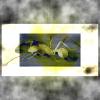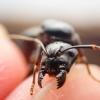Having trouble with my C. Fragilis.
Got a queen + 3 workers and some brood in October. Down to Queen + 1 worker and some brood now. Have always had some eggs/larvae, at varying sizes/development. The problem is getting them to stick around long enough to hatch (or to get a good number of them).
Previously tried feeding d. hydei (flightless fruit flies), but the store I found for them was a bit expensive and couldn't get them to last very long. They were interested at first, but then got bored after a while. Currently feeding a tiny store-bought cricket 1-2x a week and some ByFormica ant nectar. Previously tried feeding every 2 days and at a different time 1x a week (in case the feeding was stressful). I do carry the formicarium to the next room when I feed/clean so that might be a bit of vibration. Currently, I am killing the cricket before feeding. While a small, live cricket with its back legs removed got them interested, I was concerned that stress might have been the problem with the failure to thrive.
Have been keeping in Drew's starter formicarium since easy to drop in and remove food. Moved them recently after had some mild mold in the old one (mild compared to some of the photos I have seen posted by other keepers).
Any thoughts? More protein? Fewer feedings to reduce stress? Different Food?
Edit: 7/26/21 Update. Switched to the recipe for bloodworm soup on these forums. After a week, I had three of the existing brood reach the pupae stage! That was a first for this colony. Fast forward to today, and two of them have hatched! On track for growth! Taking another look at heating cables instead of heating pad.
Edited by Dinuvar, July 26 2021 - 11:11 AM.


















